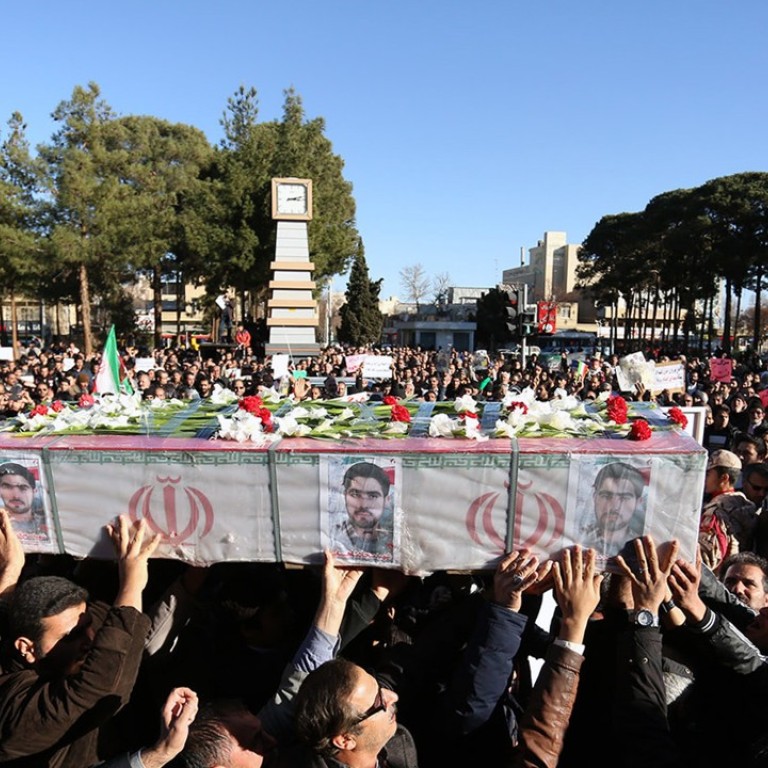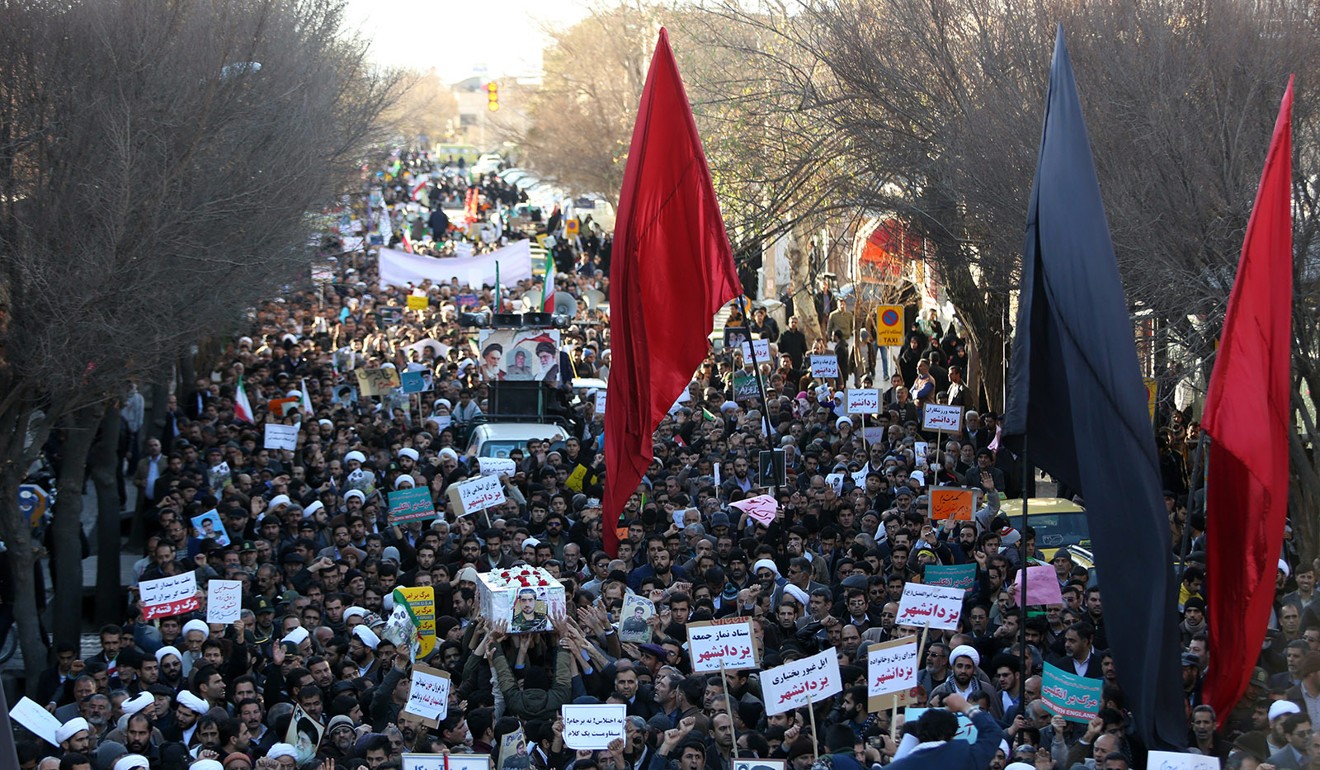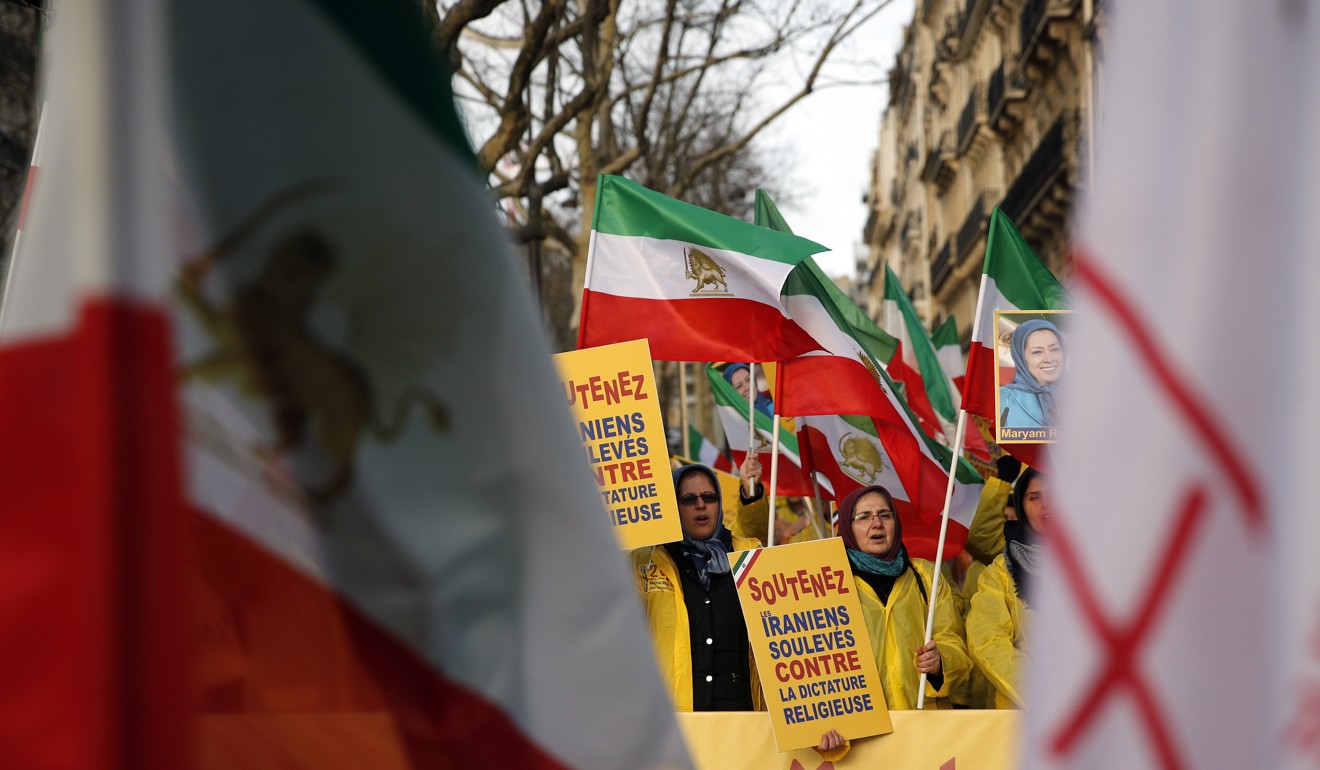
Strength of Iran protests uncertain after a week of unrest
The strength of protests shaking Iran was unclear on Thursday after a week of unrest that killed at least 21 people, with fewer reports of demonstrations as government supporters again took to the streets in several cities and towns.
It wasn’t immediately clear whether the drop in reports of new demonstrations challenging Iran’s government meant the protests are subsiding or that the authorities’ blocking of social media apps has managed to stop protesters from offering new images of rallies.
At the same time, the Trump administration acknowledged the speed and breadth of the protests took both it and the Iranian government by surprise.
The past week’s protests have been the largest in Iran since the disputed 2009 presidential election, which ended in bloodshed. While many Iranians denounce the violence that has accompanied some demonstrations, they echo the protesters’ frustration over the weak economy and official corruption.
Thousands rallied on Thursday in support of the government in various towns and cities, including in the northeastern city of Mashhad, where the anti-government protests began last week and extended to other cities.
State television repeatedly broadcast nationalistic songs and described the pro-government rallies as an “answer to rioters and supporters to the riot”. That appeared to be a reference to US President Donald Trump who tweeted in support of anti-government rallies.
Television also broadcast footage of similar pro-government gatherings in the cities of Shiraz, Isfahan, Ardabil, Birjand and Yasuj.
A top Russian diplomat warned the United States not to meddle in Iran’s affairs and suggested that Washington wants to use the unrest to undermine the Iran nuclear agreement.
“We warn the US against attempts to interfere in the internal affairs of the Islamic Republic of Iran,” Deputy Foreign Minister Sergei Ryabkov told the state news agency Tass.
Ryabkov also said Washington “is tempted to use the moment to raise new issues with regard to the JCPOA”, the Joint Comprehensive Plan of Action that limits Iran’s nuclear programme, including restricting uranium enrichment for 10 years. Vice-President Mike Pence said on Wednesday the US wants an agreement lasting longer.

In a letter Wednesday to United Nations officials, Iranian Ambassador Gholamali Khoshroo complained that Washington was intervening “in a grotesque way in Iran’s internal affairs.” He said Trump and Pence were personally stirring up trouble.
“The president and vice-president of the United States, in their numerous absurd tweets, incited Iranians to engage in disruptive acts,” the ambassador wrote to the UN Security Council president and UN Secretary General Antonio Guterres.

Trump’s UN envoy, Ambassador Nikki Haley, has called for an emergency Security Council meeting on Iran, saying the UN needed to speak out in support of the protesters. As yet, no meeting has been scheduled.
Late on Wednesday, senior Trump administration officials acknowledged their surprise that the protests took hold so quickly.
“This was not on our radar,” said one official, who like the others spoke on condition of anonymity to discuss intelligence matters.
The officials said they believed conservative opponents of Iranian President Hassan Rowhani, a relative moderate within Iran’s clerically overseen government, started the demonstrations in Mashhad, but quickly lost control of them.

